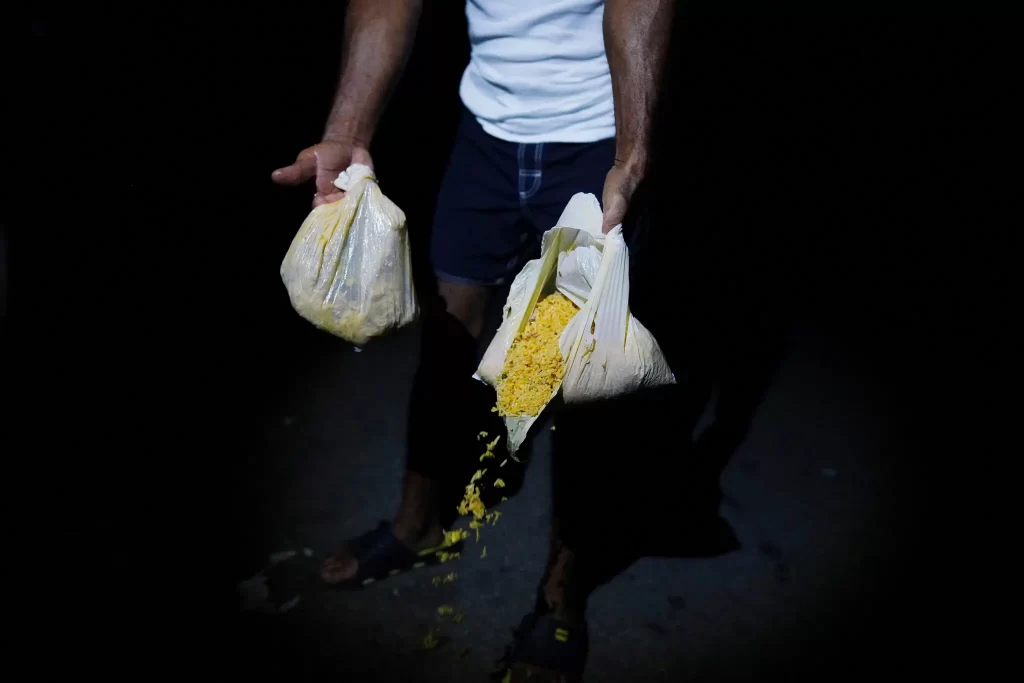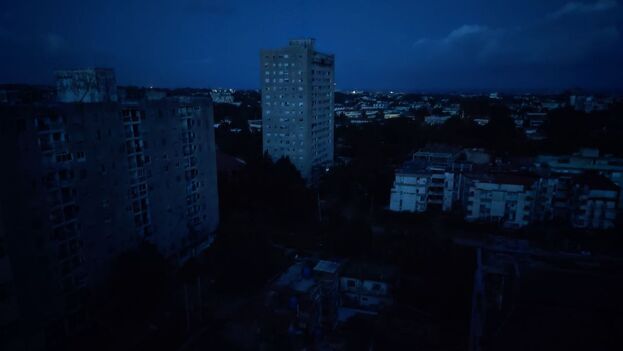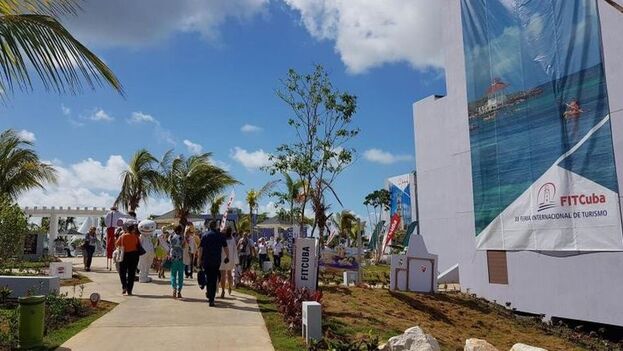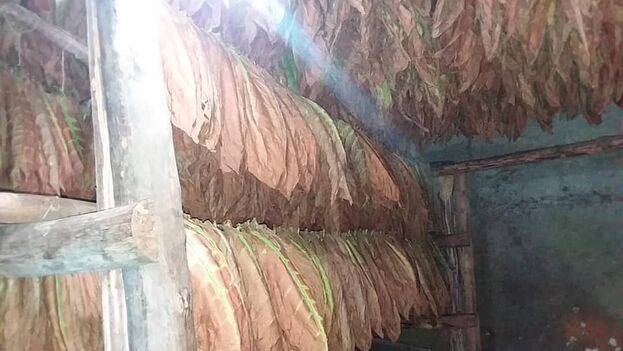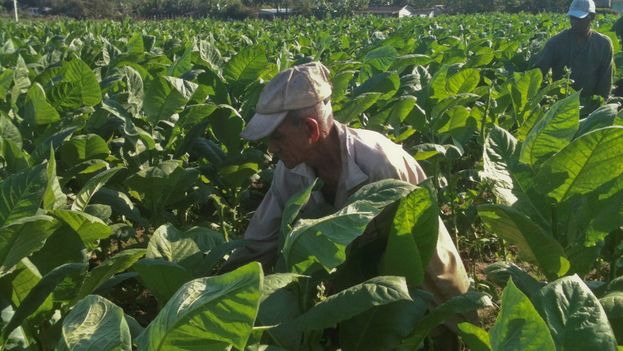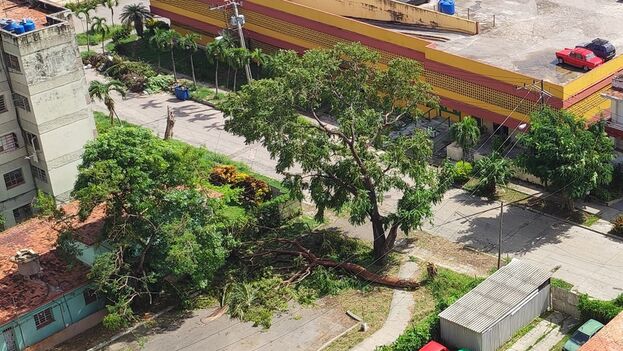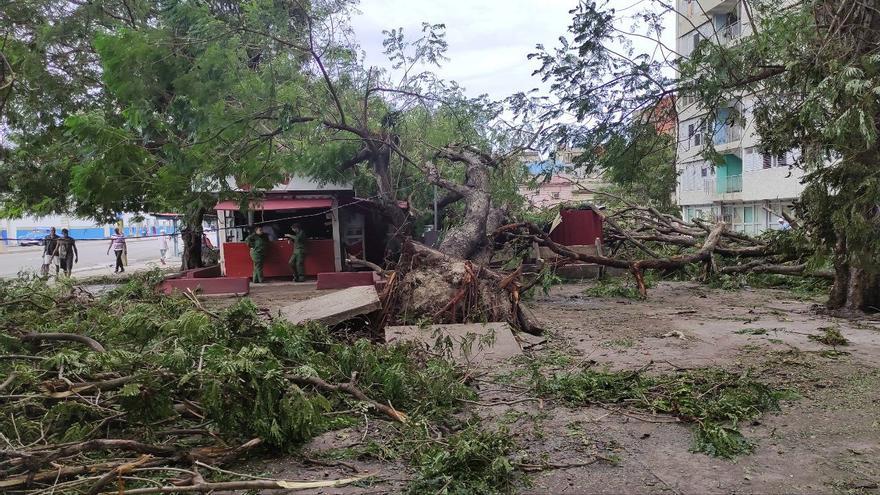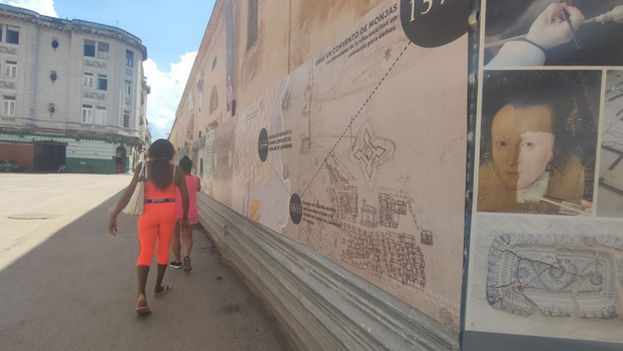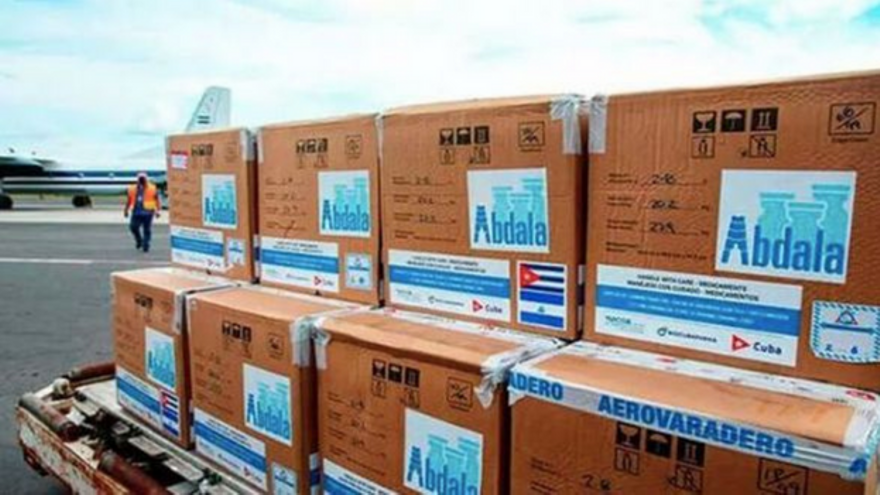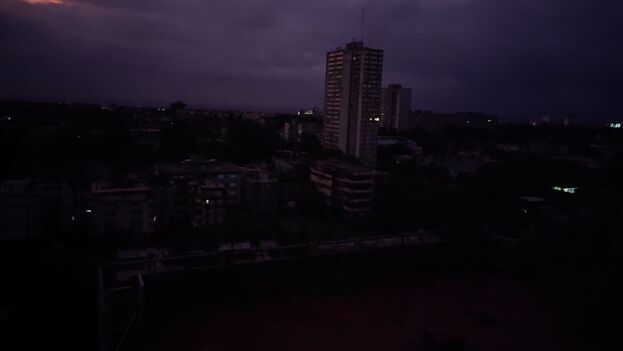And just as on his previous visit to Vueltabajo, Díaz-Canel once again showed his concern about the damage caused to tobacco, the main exportable item of Cuban agriculture. Food production obviously takes a back seat, and although it’s not reported, it will be greatly affected, especially the seasonal harvests.
The alarming concern of the leaders for tobacco has brought in Marino Murillo, who after the failure of the Ordering Task,* was rewarded with the position of President of the Tabacuba business group. This man seems to be chasing disaster wherever he puts his nose. First, with the national economy in serious crisis since the Ordering Task, and now, with tobacco.
His message to Díaz-Canel has been worrying, and he said that “intensive work is being done to try to save the leaves from previous crops that were in the warehouses, selected and stripped [from the stems], and other deposits, and despite the measures taken for their protection, they got wet.” We are very afraid that all will be lost, millions of dollars in exports of a product that, in addition, has agreements with numerous international distributors who won’t be happy with the lack of merchandise. continue reading
As if that weren’t enough, Murillo said that “the situation of the natural and controlled curing warehouses** is also very serious,” and in one sentence he tried to summarize the effects on the essential infrastructure for the quality of tobacco in strategic municipalities such as Pinar del Río, San Juan y Martínez and San Luis. Specifically, he said, “We didn’t have a single warehouse left standing. Even the newest ones were taken away by the hurricane.”
What a panorama is now opening up for the leaders! As Murillo reported, “in the case of the controlled curing warehouses, work is being done on collecting equipment in order to reuse it, but construction is more complex and expensive and thus will take more time.” More time? How much? Six months, one year? And compliance with international contracts, huh? Where is tobacco going to come from? How can you manage things in such an irresponsible way? Who will pay for the defaults?
We are very afraid that everything will end up being lost, and they won’t say anything when the disaster happens. On the other hand, to meet the needs of the planting for the 2022-2023 campaign, which should begin October 20, Murillo reported that “about 6,000 controlled-curing warehouses will have to be rebuilt in a matter of a few months.” A task defined as “duly arduous for the province, because the many workers needed for the recovery of the tobacco also have damage to their homes.”
This lack of personnel to meet the needs will be be solved, according to Murillo, “by attracting brigades of carpenters from other territories.” And he took advantage of the situation, in passing, to recognize that “we need to look for more robust designs so that this type of construction is more durable and won’t have to be rebuilt every time we’re affected by a hurricane.” Oh, so just now he realizes it? They have had 63 years to do this, which should be enough. The question is always the same: What have they done in these 63 years?
Apart from the loss of tobacco stocks, the passage of the hurricane has caused damage to homes, infrastructure, crops, roads and water systems — nothing new when it comes to tropical hurricanes. However, on this occasion it caused a dreaded national blackout that continues to be the origin of social protests throughout the country, which have led the regime to bring out the “black wasps,” the elite repressive forces.
Cubans see with concern that after more than 48 hours without electricity, their scarce frozen food is lost, and they fear they won’t be able to find it again. The lack of electricity affects the daily lives of everyone — workers, companies, students, housewives, retirees. The whole country is in a general blackout, but the state press takes every opportunity to sell a message of illusion that exists only in the minds of the journalists who write the reports.
Cubans know that “we’re not going to get out of this easily.” At the moment, the damage assessments continue to give initial results, which are very tentative, as happened with the rescue of the raw material stored in a facility of the tobacco collective V-13-26, in San Luis.
The situation is more serious for families who have lost everything and know that they will have to line up to receive some accommodation, which will take time. The state of housing in Cuba is so alarming that these losses caused by hurricanes pile up, and people have no choice but to wait patiently. The first estimates indicate that in San Luis “about 85% of the housing stock has been affected by the hurricane.” It’s difficult to recover what was lost.
Meanwhile, the regime is preparing to receive foreign aid from its partners, Maduro and López Obrador. It’s strange that other countries such as Spain, France, England, and even some Caribbean neighbors, as on previous occasions, haven’t been equally generous. It doesn’t seem that any aid is going to arrive, so the Cuban communists have given instructions for support brigades from other parts of the Island to leave their territories and contribute to the recovery in different sectors, such as electricity and communications.
Instead of having efficient ways to handle emergency situations, as in other countries, which even create specialized army units to face these crises, Díaz-Canel’s solution, as a good communist, is “popular mobilization,” and on this occasion he has pronounced the word “revolution” more than previously, as if the umbilical cord that ties him to this process had been filled with blood.
It’s a sore subject, this revolution that Díaz Canel talks about and begs for help. It can do little for Cuba and the Cubans, because it’s exhausted, obsolete and, as we are seeing, unable to cope with the consequences of a hurricane. This revolution, as has already been proven, doesn’t serve to solve the two urgent problems at the moment: housing and food, or to generate electricity in a normal way.
In the end, as Granma recognizes, “Ian hasn’t been the most intense meteorological phenomenon that has ever crossed through Vueltabajo, but its slow-moving route over the most populated area of the province, along with its winds of more than 125 miles per hour, place it among the most destructive.” One firm opinion and the other soft, so as not to be wrong when the newspaper archives are revised.
The revolution won’t be able to erase the traces of this disaster, and Pinar del Río will have to rise by its own means. It will get little or no help from the regime.
Translator’s notes:
*The “Ordering Task” is a collection of measures that include eliminating the Cuban Convertible Peso (CUC), leaving the Cuban peso as the only national currency, raising prices, raising salaries (but not as much as prices), opening stores that take payment only in hard currency which must be in the form of specially issued pre-paid debit cards, and a broad range of other measures targeted to different elements of the Cuban economy.
**Tobacco leaves are “cured” or dried to define their color and quality. In Cuba, this is done by hanging the leaves in a “barn,” or warehouse, and can take four to eight weeks.
Translated by Regina Anavy
____________
COLLABORATE WITH OUR WORK: The 14ymedio team is committed to practicing serious journalism that reflects Cuba’s reality in all its depth. Thank you for joining us on this long journey. We invite you to continue supporting us by becoming a member of 14ymedio now. Together we can continue transforming journalism in Cuba.
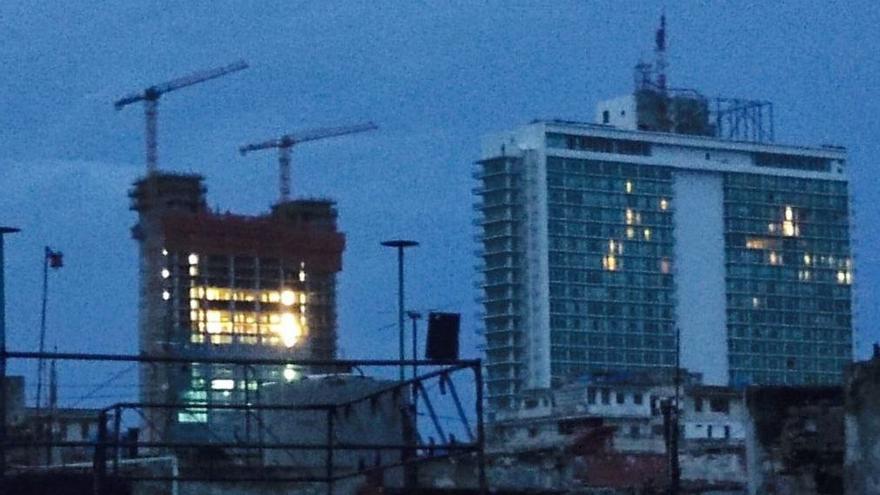
![]() 14ymedio, Madrid, 28 September 2022 — In the midst of absolute darkness on the Island, Cuban Television, in a special report at midnight this Wednesday, updated information about the general blackout, from which only citizens who had electric generators were spared. The technical director of the Electric Union, Lázaro Guerra, explained that the thermal power plants Lidio Ramón Pérez, in Felton, and 10 de Octubre, in Nuevitas now had started up, and he postponed a new report until 7:30 this morning, but the tone was not excessively optimistic.
14ymedio, Madrid, 28 September 2022 — In the midst of absolute darkness on the Island, Cuban Television, in a special report at midnight this Wednesday, updated information about the general blackout, from which only citizens who had electric generators were spared. The technical director of the Electric Union, Lázaro Guerra, explained that the thermal power plants Lidio Ramón Pérez, in Felton, and 10 de Octubre, in Nuevitas now had started up, and he postponed a new report until 7:30 this morning, but the tone was not excessively optimistic.
